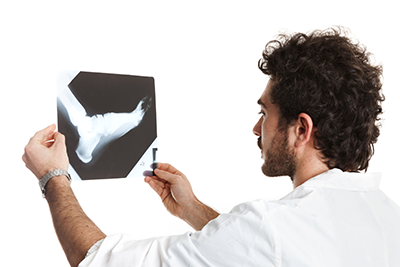Heel SurgeryHeel spur surgery is sometimes the last resort for many heel spur suffers. Heel spur surgery is usually only considered after conservative treatment options have been used without success. Severe pain from a heel spur can often be very difficult to tolerate, and every movement can be almost unbearable. Luckily, surgery is successful in treating pain in most cases, although there are always potential side effects that every sufferer must become aware of.
Types of Heel Surgery Procedures Treating foot pain with heel spur surgery can be done in a couple different ways. Endoscopic plantar fasciotomy is the first way to eliminate pain. In this procedure two slits are made around the heel. Through these slits in the side of the heel a small camera is inserted which allows the surgeon to see the injured area. He then detaches, or cuts, the plantar fascia ligament from the heel bone using a small knife, relieving stress and pain and allowing new fascia tissue to develop in the space that was created. With this procedure, the tension that created plantar fasciitis or heel spurs is eliminated. There are also other heel surgeries that are performed in a slightly different way. In other procedures the entire plantar fascia may not be cut. Instead, only a portion of the ligament is detached. Some surgeons feel that this procedure is not as effective as endoscopic plantar fasciotomy, while others think that it has better results. Regardless, it is a good idea to talk to your orthopedic surgeon to learn about each individual procedure that is available for your condition and to choose the one that is most appropriate for you. In addition to these heel spur surgical procedures, the surgeon may also decide to remove the spur itself during the operation. When this occurs, the surgeon, while guided by a small camera, uses small instruments to completely remove the bony fragment of calcium. This can seriously diminish occurrences of pain in the heel since it prevents the tissue around the heel from being damaged further by the bone fragment. Heel spur surgery should be used only as a last resort after other, more conservative treatment methods have failed to produce successful results. When a heel spur is identified and treated early, conservative methods usually prove to be very effective, particularly orthotic shoe inserts. However, if left unchecked a heel spur and its symptoms could become more serious and heel spur surgery may then be needed. |
Additional Services |
Additional Conditions and Treatments
Book Your Appointment Today |









